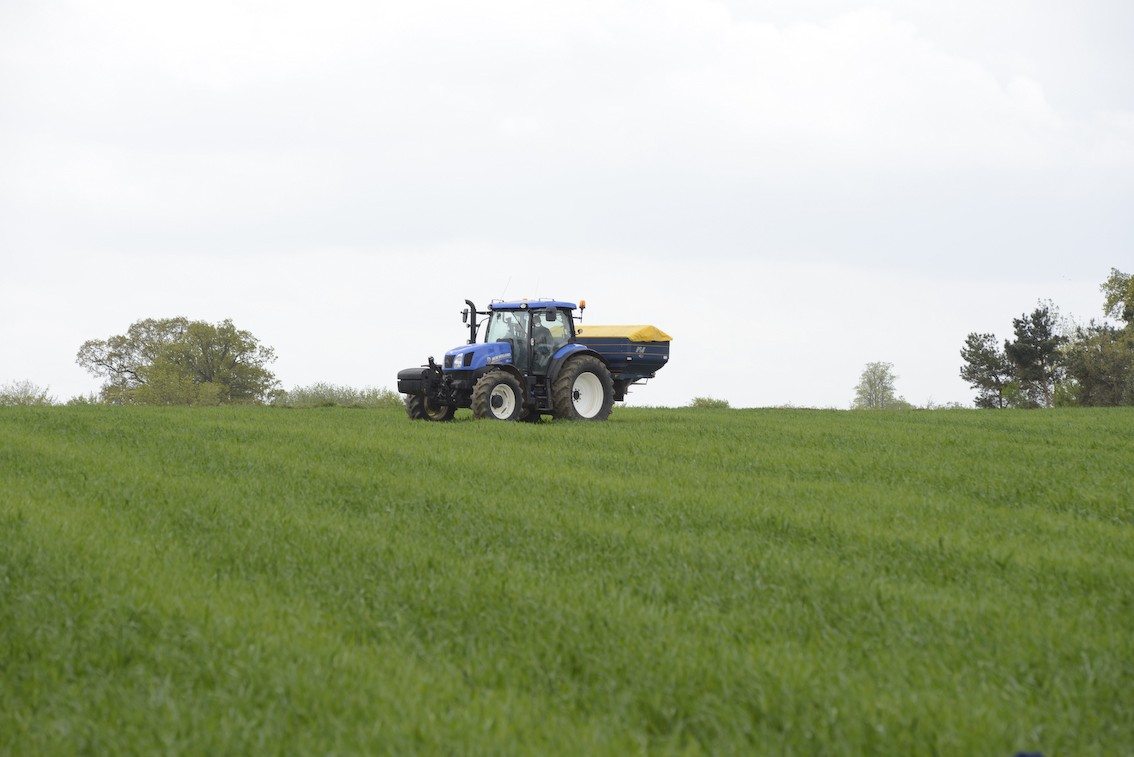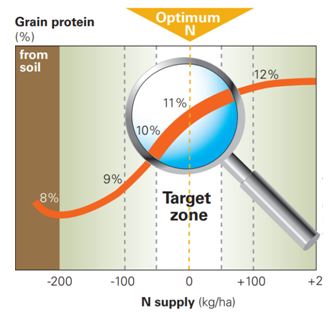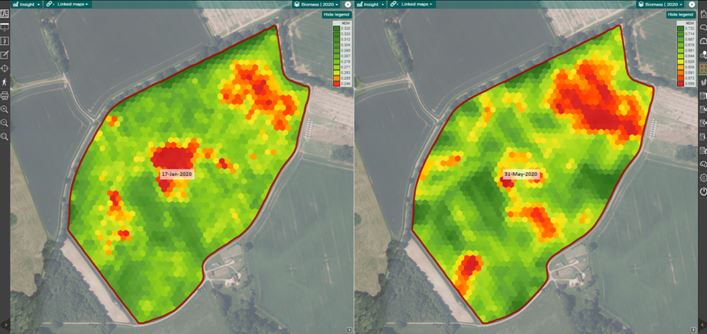Using grain protein to plan your nitrogen rates
The nitrogen inputs to your crops can be one of the most important factors that influence crop output and, ultimately, the profitability of your business. There is a wealth of tools and information to help guide you when it comes to applying the optimum rate of nitrogen, but how do you know if you are actually getting it right and making the best use of these applications to maximise your financial return?
It's a question that needs some consideration and it's one that will likely cause you to think about other factors too. For instance, have you changed the rate of nitrogen applied to your wheat area in the last five years? While it can seem easier to keep ordering the same amount and type of product each growing season, is it really the most practical solution for your crops or the most cost effective? How can you work out if you should be ordering more or less?
Assessing the success of previous nitrogen programmes
The first step to working out your requirements is to look back at past programmes and analyse performance to identify any shortfalls or over-applications.
Checking your yields
Yield always feels like the most obvious starting point. After all, if your target or five-year average yields were exceeded, then that must mean that the correct amount of nitrogen was applied. Or does it? Is it really that simple?
Agricultural soils don't usually contain enough residual plant-available nitrogen to meet the needs of a crop throughout the growing season. As a result, supplementary nitrogen applications have to be made each year to meet crop demand. Applying the correct amount of nitrogen at the correct time is an essential feature of good crop management.
When calculating how much manufactured fertiliser nitrogen to use, all supplies (organic manures, etc.) and losses of nitrogen – coupled with the efficiency of fertiliser nitrogen use by the crop – must be considered. Unsurprisingly, this can make the calculation seem very complicated: how can you factor in soil N supply, temperature, mineralisation and leaching etc.?
This is where grain protein comes in.
Grain protein is the best indicator of optimal N applied
Looking at your grain protein is, thankfully, a much easier way of assessing whether or not the correct amount of nitrogen has been used retrospectively.
The benchmarks for optimum grain N in wheat is 11% for feed crops and 12% to optimise yield for milling (although most milling contracts require 13% protein).
If crops are above or below these benchmark levels when you review your grain protein results then N rates should be adjusted up or down to make sure you meet your specification and are using your inputs efficiently.
It's worth noting that this does assume the crop has taken up a sufficient level of sulphur as this can also influence the efficiency of nitrogen uptake and ultimately the production of grain protein.
Image taken from AHDB's "Nitrogen for winter wheat – management guidelines".
Grain analysis can be very useful in identifying crops that have been over or under-fertilised with N, however, grain analysis results should ideally be taken from individual fields as they can vary across the farm. Looking at a range of barometer fields over a few years will give you more detail and is the most robust way to draw conclusions, but even results from grain stores coming from a number of fields can still give early indications.
Patterns of results that are either low or high compared to optimum levels along with the associated yield results can be used to determine if N application levels were potentially low or high respectively.
Checking your grain N results
Ideally, all wheat fields should be analysed to discover their grain N content but the range across the farm is most important to understand, so choose fields with different previous crops, soil types, yield potential, manure use, etc. As a Frontier customer if you choose to conduct any grain N analysis you will be able to view all of your results within MyFarm, Frontier's farm management platform.
These records can then be used to assess the historic rates of N. To optimise yield, base rates can be adjusted up and down by applying the correct amount of N to meet the optimum grain N values mentioned earlier.
Optimising requirements further with variable rate nitrogen
While grain N is a good place to start when it comes to optimising nitrogen rates, most sample results will be for a whole field, variety or even single crop on a farm. Within these sampling units there will be different crop growth characteristics and yield variations due to changes in the landscape, soil type and management that led to differences in crop performance, nitrogen supply and utilisation.
This crop variation can be picked up easily with satellite imagery, as shown in the MySOYL maps above. Any differences identified in crop growth can be used to adjust the base rate up or down, therefore maintaining the optimum N in relation to crop demand.
Having investigated this in a number of SOYL trials, results have shown that applying nitrogen variably can increase yields, improve grain N levels (particularly useful for milling wheat crops) and therefore optimise N rates. You can learn more about variable rate nitrogen on the SOYL website.
Get in touch for further advice
In a year with a lot of wheat going into the ground, ensuring you meet both your specification and make optimum use of your inputs will be even more important to ensure the best financial return is achieved.
For more guidance on any of the above in relation to circumstances on your farm, or to learn more about any of the services mentioned, please speak to your local SOYL or Frontier contact or get in touch.
As a subscriber, you’ll receive email alerts each time a new blog is published so you can always stay updated with the latest advice and insights from our experts






Comments